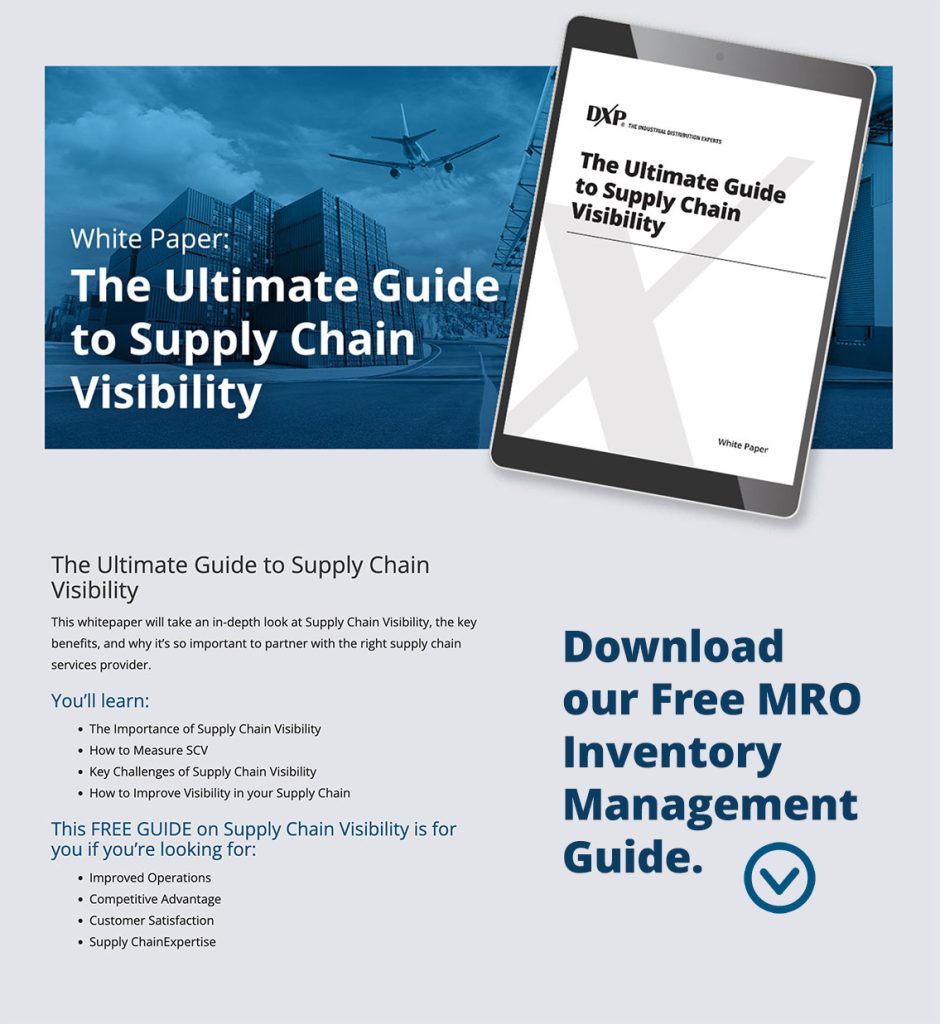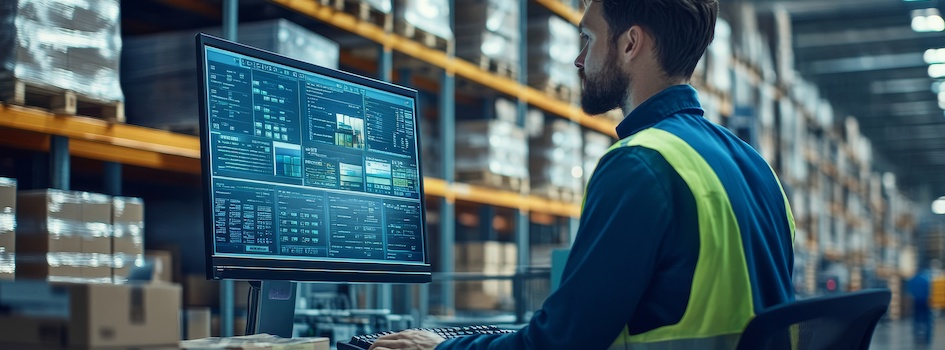
End-to-End Visibility in Supply Chain: A Competitive Advantage
How DXP Makes It Possible
At DXP, we help companies get their supply chains in sync without making it harder on their teams. Our VMI, inventory tools, and supply chain services make it easier to stay on top of things.
Using an ERP system already? No problem. Starting from scratch? We can help with that too.
Talk to a DXP supply chain expert today.
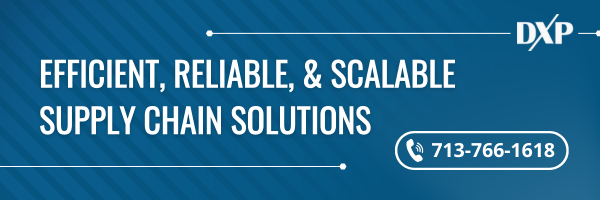
Supply chains today are a tangled web. With products coming from all over, customer demands shifting fast, and unexpected hiccups popping up all the time, it’s tough to keep things on track.
In simple terms, end-to-end visibility means having real-time access to all the moving parts in your supply chain, from suppliers and inventory to logistics and customer delivery. With this level of insight, companies can stop reacting and start anticipating. And that’s a major competitive advantage.
What’s Missing in Most Supply Chains
Many companies are still operating with systems that weren’t designed to talk to each other. Data is scattered across departments, updates rely on manual entry, and decisions get delayed because no one has the full picture.
What does this leave you with?
- Disconnected systems and siloed data
- Manual processes that create blind spots
- Lagging responses to disruptions and demand changes
When you can’t see what’s happening, you can’t fix what’s broken.
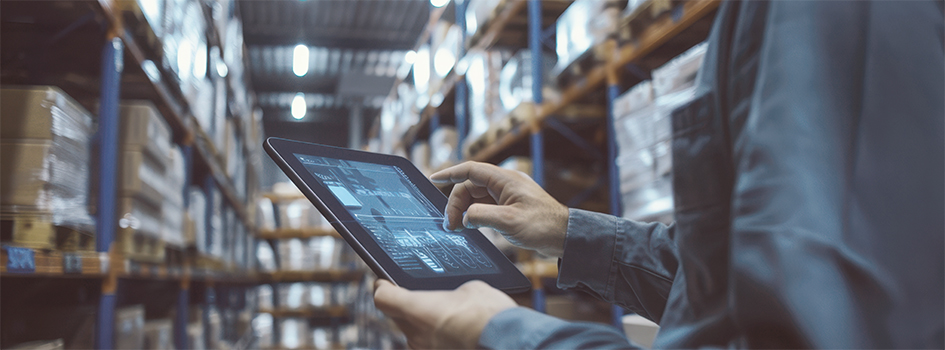
Building Blocks of End-to-End Visibility in Supply Chain Management
End-to-end visibility (also called E2E supply chain visibility) isn’t one tool or one screen; it is an interconnected setup that pulls data and context from every stage of the supply chain. Here’s what it should include:
1. Supplier Activity
End-to-end visibility in supply chain management starts at the source. You need to know what your suppliers are doing, not once a quarter…but all the time.
- Shipment schedules and delivery status
- Quality metrics and incident history
- Fill rates and order accuracy
- Compliance with contract terms
If a supplier is slipping, you want to catch that trend before it causes problems on your end. Visibility here also helps during planning and negotiations. If you can see which suppliers perform reliably and which ones don’t, it’s easier to shift your strategy or renegotiate terms.
2. Inventory Tracking
This is more than knowing how much stock you have. You want to track stock by location, status, movement rate, and expected usage.
- Location: Which facility or job site it’s stored at
- Movement: How fast it’s turning and where it’s going next
- Usage: What projects or products it’s tied to
Can you tell the difference between fast-moving and slow-moving items at a glance? Do you know which bins, shelves, or job sites are holding excess parts? Real-time visibility cuts down on unnecessary purchases, keeps storage lean, and helps teams avoid scrambling when something runs out.
3. Logistics and Movement
Once a product leaves a supplier or warehouse, it’s in motion…and if you can’t see it, you’re guessing. Visibility means knowing where shipments are at any moment, what their ETA is, and whether anything is delayed.
You can also track warehouse transfers, delivery timelines, and freight issues as they happen. This helps you update customers, reroute deliveries if needed, and keep internal teams aligned with what’s really in motion.
4. System Connectivity
For E2E supply chain visibility to work, your systems need to talk to each other. Otherwise you end up duplicating work and missing updates. Inventory data should update your e-commerce platform. Sales forecasts should adjust procurement. When systems are connected, no one’s working off outdated info. That keeps people from making the same decision twice or pulling reports that tell two different stories.
5. Forecasting and Planning
With clean, current data, forecasting becomes less about guessing and more about responding. It helps planners avoid knee-jerk overbuying and gives leadership a clearer picture of what’s coming.
Great forecasting depends on:
- Seasonality and market trends
- Sales velocity and order history
- Supplier capacity and lead times
- Usage rates and customer habits
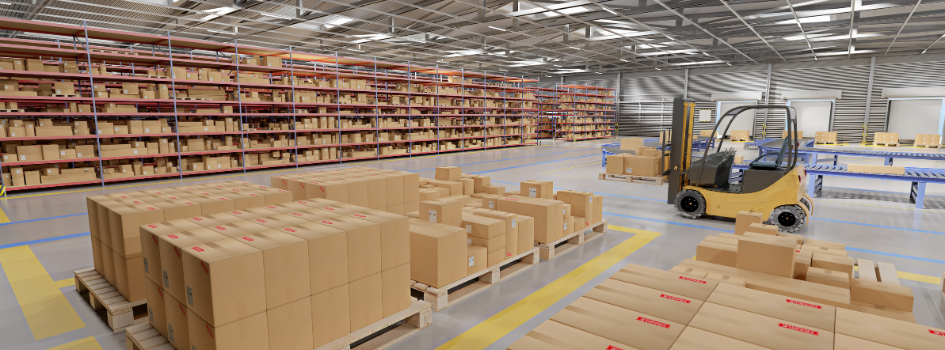
How to Start Building E2E Visibility Today
Getting started doesn’t mean overhauling everything. Here’s how to make progress:
- Audit your current tech stack. Map out where your supply chain systems connect (and where they don’t)
- Identify blind spots. Look for areas where manual work or siloed data is slowing you down
- Evaluate unifying systems. Find tools that support end-to-end visibility in supply chain operations
- Set measurable goals. Examples include reducing stockouts by 20% or improving order accuracy by 15%
Visibility = Advantage
When your team has visibility, every part of the business benefits:
- Faster Decisions: Real-time data enables quicker reactions to disruptions
- Smarter Spend: Prevents overbuying and lost sales from stockouts
- Stronger Relationships: Transparency builds trust with customers and suppliers
- Risk Reduction: Early warning systems catch issues before they spread
Call (936) 261-7736 for more information about our SmartSolutions and other supply chain services.

